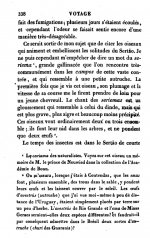Björn Bergenholtz
(former alias "Calalp")

I think it is fairly well established, and explained, how and why the Seriema's (in Cariamidae) are called what they are called. Now I´m only trying to deepen my entry regarding those words …
I´ve tried to follow the name through Markgraf (Marcgrave), Willughby and Ray to Linnaeus, Brisson and Bonaparte and as far as I´ve seen the first time the (precise spelling) Seriema appeared in the ornithological litterature was in 1830, when the French naturalist Auguste de Saint-Hilaire reported from Brazil:
With only limited knowledge (close to none!) of French I hope that any of Bird Forums readers feel like translating those quotes for me!? If so, please as accurate as possible, as I would like to quote them myself in Swedish. And don´t hesitate to remark on any spelling errors that I might have done above.
Anyone feel up to it?
I´ve tried to follow the name through Markgraf (Marcgrave), Willughby and Ray to Linnaeus, Brisson and Bonaparte and as far as I´ve seen the first time the (precise spelling) Seriema appeared in the ornithological litterature was in 1830, when the French naturalist Auguste de Saint-Hilaire reported from Brazil:
With the following foot-notes:"Je ne puis cependant m`empêcher de dire un mot du SERIEMA* grande gallinacée que l´on rencontre trèscommunément dans les CAMPOS de cette vaste contrée, et qui ressemble à une petit autruche. ... Les chant des SERIEMAS est un gloussement qui ressemble à celui du dinde, mais qui est plus grave, plus aigree et beaucoup moins précipité. Ces oiseaux vont ordinairement deux ou trois ensemble; ils font leur nid dans les arbes, et ne podent que deux oefs** ”.
” *Le CARIAMA des naturalistes. Voyez sur cet oiseau un mémoire de M. le prince de Neuwied dans la collection de l’Académie de Bonn.
**Ou m’assura, lorsque j’étais à Contendas, que les EMAS font, plusieurs ensemble, des trous dans le sable, y pondent leurs oefs et les laissent couver par le soleil. Les oefs d`AVESTRUS (autruche) que j’ai vus moi-mème à peu de distance de l’Uruguay, étaient simplement placés par terre sur peu d’herbe. L’AVESTRÚS de Rio Grande et l’EMA de Minas Geraes seraient-elles deux espèces différentes? et faudrait-il par conséquent admettre dans le Brésil deux sortes d’AUTRUCHE (CHURI des Guaranis)?"
With only limited knowledge (close to none!) of French I hope that any of Bird Forums readers feel like translating those quotes for me!? If so, please as accurate as possible, as I would like to quote them myself in Swedish. And don´t hesitate to remark on any spelling errors that I might have done above.
Anyone feel up to it?






